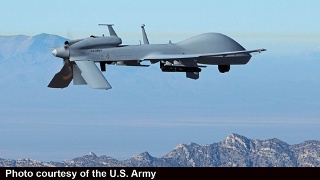May 8 2015
With advances in technological capabilities, unmanned aircraft systems (UAS) have taken on crucial tasks in the military. Although this progression keeps our troops safer, adapting to smaller platforms like a UAS comes with its challenges. Among these challenges is developing updated hardware to fit within the size, weight, and power (SWaP) constraints of a UAS.
At BAE Systems, our sensors team rose to the occasion by developing a tool that will allow warfighters to see the big picture with intel from a U.S. Army UAS known as the MQ-1C Gray Eagle.

Our new sensor, called the Tactical Signals Intelligence Payload (TSP), gathers intelligence by intercepting signals, known broadly as Signal Intelligence, or SIGINT capability. As part of an indefinite delivery, indefinite quantity contract potentially worth $70 million, we received an order for the initial production of 12 TSP systems and engineering support services. These new SIGINT systems will help provide intelligence for the U.S. Army and Special Operations Command, and will be adaptable to other manned and unmanned aerial platforms.
The TSP system’s open, software-defined architecture means that its network of sensors is interoperable and can talk to each other. Additionally, the system’s ability to capture a 360-degree aerial field of view gives the ground commander a comprehensive picture, allowing the commander, sensor operators, and analysts optimal situational awareness so they can make decisions in near real-time. Using the sensor to detect, identify, and geo-locate electronic emitters, the ground team can address any number of targets – all from one system.